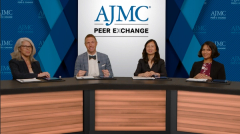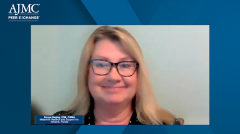
Patient Advocate's Role in Shared Decision Making
An expert describes the patient advocate’s role in shared decision-making with a patient for novel therapeutic options.
Episodes in this series

Sonya Negley, IOM, CSMA:It’s important to know that patient advocacy organizations do not share in the decision-making process. What we do is help educate the patient to make the best decision. Oral SERDs [selective estrogen receptor downregulators] are an example. This is a new area for metastatic breast cancer, and it’s a specific target. Sharing the latest information about mutations, for instance, how does an acquired mutation occur? A lot of patients didn’t know there were acquired mutations. There is [often] so much information to discuss with the care team, they can’t get to everything. So [it’s helpful] if we can say, “If you are this subtype, and you have this mutation that’s an acquired mutation, [then] here is a new option you may want to consider with your care team that you could try.”
We’ve come a long way in the metastatic breast cancer space. Most of the treatments are infused or injected, so patients [often] have to go into a cancer center, the hospital, or the oncology center and have their treatments there. They spend a lot of time there. If a patient has the opportunity to have a treatment—say an oral treatment, like oral SERDs—that they can do at home, it’s not just the treatment but it’s [also] the quality of life that that brings to the patient. Because they do not have to schedule this time out, schedule this time away from their family, go to the treatment center, and spend half a day or more there to receive their treatment. The treatments are treating the total patient and it’s giving patients different options.
Sharing that information with patients is an education process because they’re not used to it. They’re not used to having that time away or being able to take their medicine at home. That is one of the really great things about these oral medications that are coming to market now. Not only do they treat a specific mutation, but they also allow a patient to have that targeted treatment at home.
Transcript edited for clarity.
Newsletter
Stay ahead of policy, cost, and value—subscribe to AJMC for expert insights at the intersection of clinical care and health economics.









































